Seeing a younger dog attacking older dog is never easy for their owners, but it’s a more common practice than you would think.
An age gap is one of the most frequent reasons why two canines can’t get along in the same space, even if they belong to the same breed.
Other causes might include cognitive dysfunctions, potential health issues, or simply a lack of energy in aging dogs. If you notice that your older canine won’t leave your side or starts following you even to the bathroom after a new pup arrives, you need to check the possible causes for such behavior.
If you are keen to know more about younger dogs attacking an older dog, as well as the causes for these incidents and the solutions to minimize them, continue reading this article.
Why Is The Younger Dog Attacking Older Dog?
Almost every multiple dog owner will notice that, sooner or later, their younger canine starts attacking their senior one; if they’re willing to accept that the two aren’t on such good terms as it might have seemed when they were first introduced.
It’s crucial to consider this type of behavior as aggressive and react appropriately.
The owner is the primary solution to the majority of issues between two canines, which is why it’s essential for you to take the proper steps at the right time.
Below is a list of reasons why younger dogs might feel endangered by older canines or feel the need to show aggressive behavior towards them.
1. Canine Pain
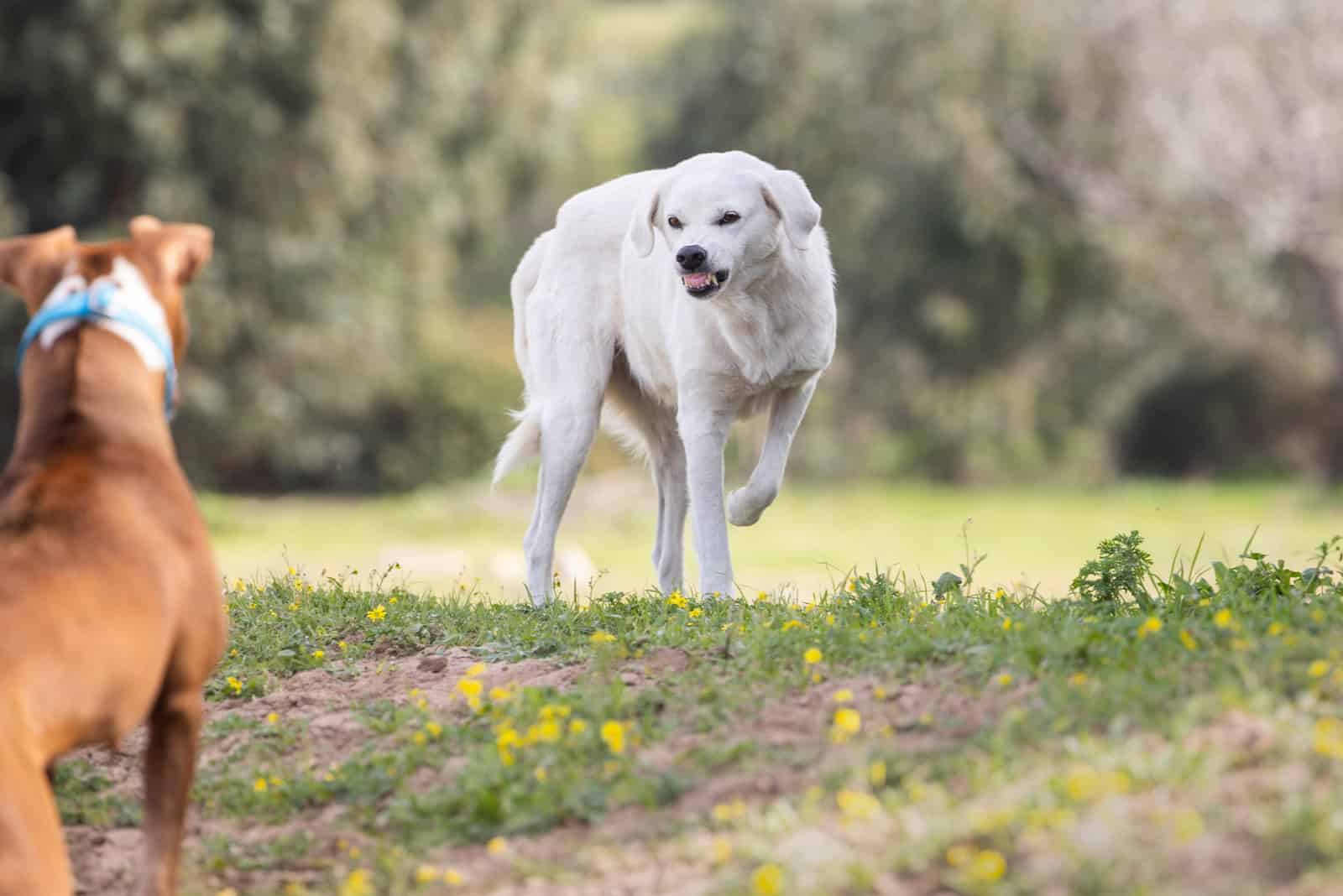
There is a high chance that the older canine simply doesn’t feel like playing with the younger one, even if they used to have great social skills with humans and other animals.
There are several reasons why this might be. An older dog usually shows signs of pain by growling or if they yelp, but it can be really challenging for younger dogs to comprehend what’s going on, so they might become irritated by these sounds and attack the older pup.
Also, puppies and young dogs usually have a large amount of energy that they spend on playing with other canines or running around, but they also don’t understand the possible limits of those around them.
For example, older canines might develop certain health issues that reduce their ability to move, such as hip dysplasia or arthritis.
Such health problems might make older canines grumpy and hostile towards anyone around them, especially young dogs who are trying to play. The older dog might just need peace and time to rest.
The younger canine can easily see this as unwanted behavior that it has to respond to, which is why they both eventually end up in a dog fight.
How Can I Prevent This Issue?
As the owner of both dogs, you have the ability to prevent almost any kind of negative attitude between the pups if you react in time.
It might be difficult to notice any signs of pain in your canine, but if you see that your senior dog is far less active, spends time laying around and staring at nothing, refuses to walk for a longer time, etc., then it’s high time for you to make some moves.
First of all, consult with your vet and take your senior for a checkup. Even if the problem can’t be completely solved, your senior pup will at least get some treatment, which might help ease their pain.
On the other hand, there are also certain things you can do to prevent the younger pooch from irritating the older one, such as:
Separation before any difficulties – If you notice that the older canine isn’t responding to the playful behavior of the younger dog, especially if they’re constantly running around them, it’s time to separate them. The best way to do so is to take the younger pup for a walk or play with them until they have spent a certain amount of energy by themselves.
Instill proper behavior in your puppy – It is crucial for a junior canine to learn how to act properly towards other pets and humans, especially how to manage their urges and instincts. You need to train them to comply with your commands to stop irritating the old dog.
Don’t let the younger canine climb on top of the older one – It’s understandable that young pups have higher energy levels, which is why they love to jump around on people and other dogs. However, if they show such behavior towards senior canines, they might hurt them and cause even more pain, which is why you shouldn’t allow youngsters to jump around or on them.
2. Problems with Agility
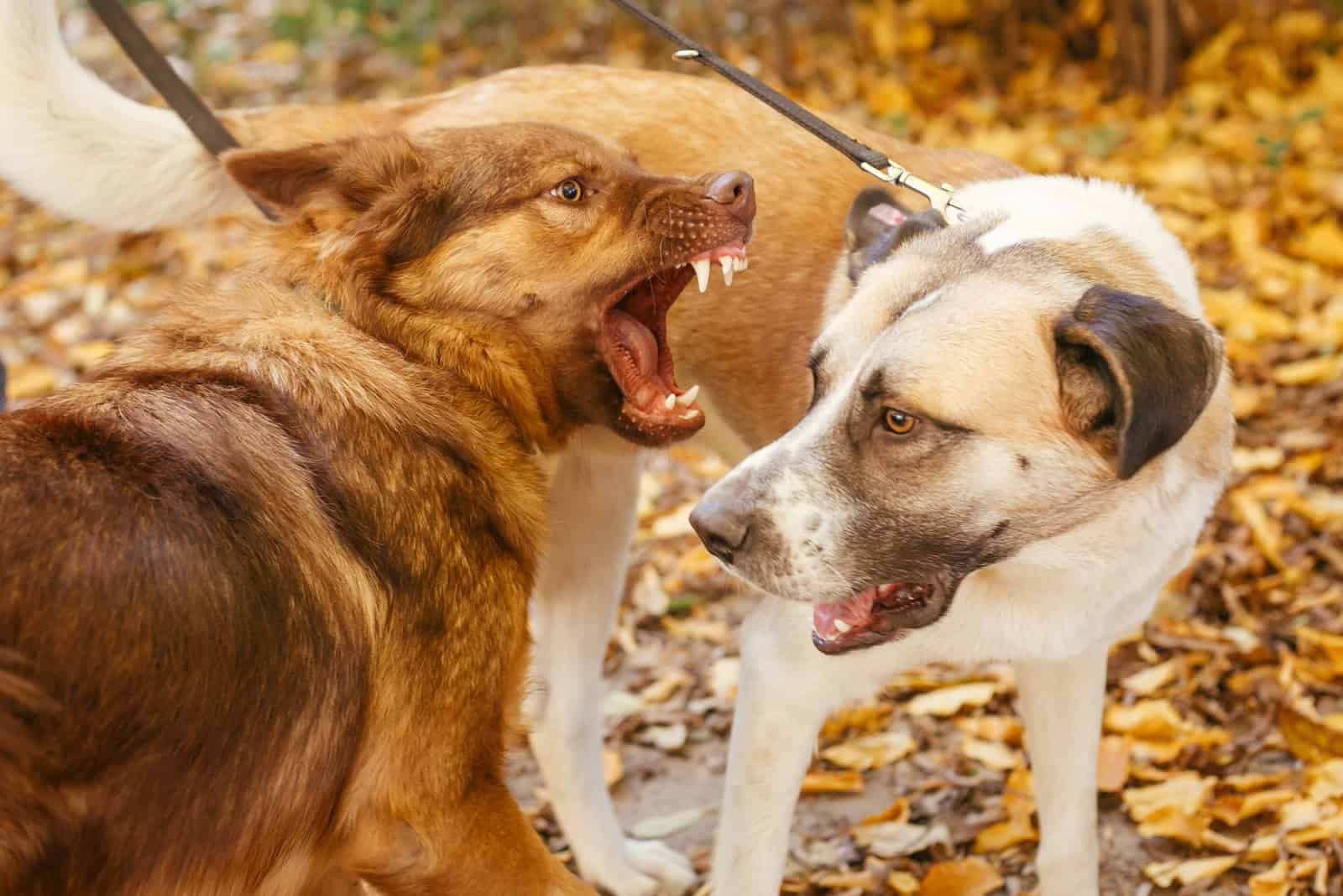
This issue is partly connected to the problems mentioned above. Sometimes, older canines might not have any specific condition but do move slowly or have problems with their agility or mobility in general.
Therefore, they might easily display signs of irritation if they’re not able to avoid uncomfortable situations. The older pup might snarl or bark excessively if the younger canine constantly tries to get their attention using excessive playful behavior.
It’s possible that this may ratchet up the pressure between them to the point where they end up having a massive brawl as a result.
How Can I Prevent This Issue?
Essentially, the solution to this issue is quite similar to the one that was described in the previous section.
First of all, you need to set the boundaries yourself – show your canines who’s the dominant one and who they should both obey.
After that, you’ll be able to separate the canines or put an end to any kind of unacceptable behavior. If the younger dog attacks the older one as a reaction to the latter one’s initial attitude, try to separate them more often.
The best way to do so is by taking the new puppy for a walk or finding some activities that might help with decreasing the high levels of energy they have.
3. Dog Jealousy
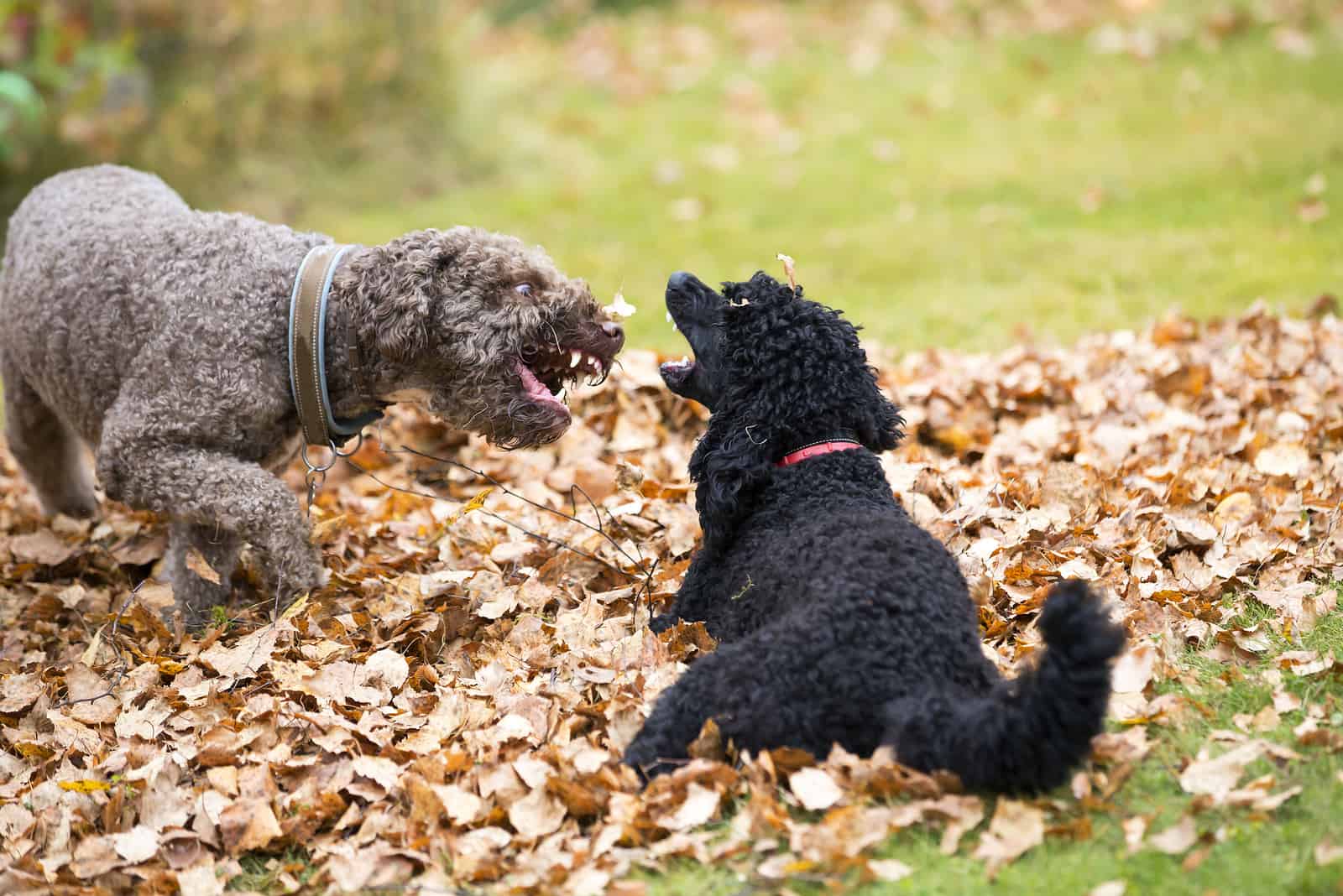
This is one of the most frequent reasons why a younger canine attacks an older one, or vice versa.
It’s common knowledge that dogs battle with one another for their owner’s affection and will do whatever it takes to get their attention.
There is a high chance that a younger pup will experience a certain amount of jealousy if it notices that your senior canine is getting more attention and affection than usual.
Some owners will try to show more love to their senior pooches so they don’t feel endangered by new dogs, but such action might be a double-edged sword.
The new puppy could eventually start fighting for your attention by showing signs of aggression towards the older one.
If you notice that the young canine suddenly wants to sleep next to you or that they’re becoming overly attached, it’s time to react, so the situation doesn’t become more serious.
How Can I Prevent This Issue?
When you return home, try not to get your dogs too excited. When your dogs are overjoyed to see you, it might be difficult to maintain a calm head and not lose composure.
Therefore, when you arrive home, make an effort to maintain a cool attitude towards both canines. You could even try ignoring them entirely at first in order to prevent the younger canine from becoming out of hand.
A good way to suppress unwanted behavior is to practice time-outs. Dogs can behave just like children in some situations; therefore, it’s no surprise that some owners use similar techniques when they’re trying to raise young pooches.
Aggressive behavior might also be caused by strong vocalizations from one side, because most pups find it to be a hostile attitude.
That is why it’s recommended that owners speak in a calming way, without any sudden movements or gestures that might be perceived as a negative act towards them.
Who Should Get Your Attention First?
For most owners, it’s difficult to decide which canine should get their attention first because there is a high chance that the other one will become angry or disappointed.
The best advice is to pet both canines together if that’s possible by any means. If neither of your canines show open signs of aggressive behavior, such as physical attacks because of jealousy, try calling them to sit together with you and cuddle them both at the same time.
This can also be an excellent way for the two dogs to connect. If they feel that they’re both receiving the same amount of love from their owners, their tension might finally be reduced.
However, if you notice that one of your canines is displaying a negative attitude towards the other one (especially the younger one towards the older pup) in the form of lunging, snarling, nipping, or raised hackles, it might be better to pet the more jealous canine first.
It’s possible that this will seem like a negative sort of behavior modification, but in the long run, the younger canine will see that they’re getting the same amount of attention as the older doggy and will eventually seek less attention.
4. Dog Aggression Caused By Food
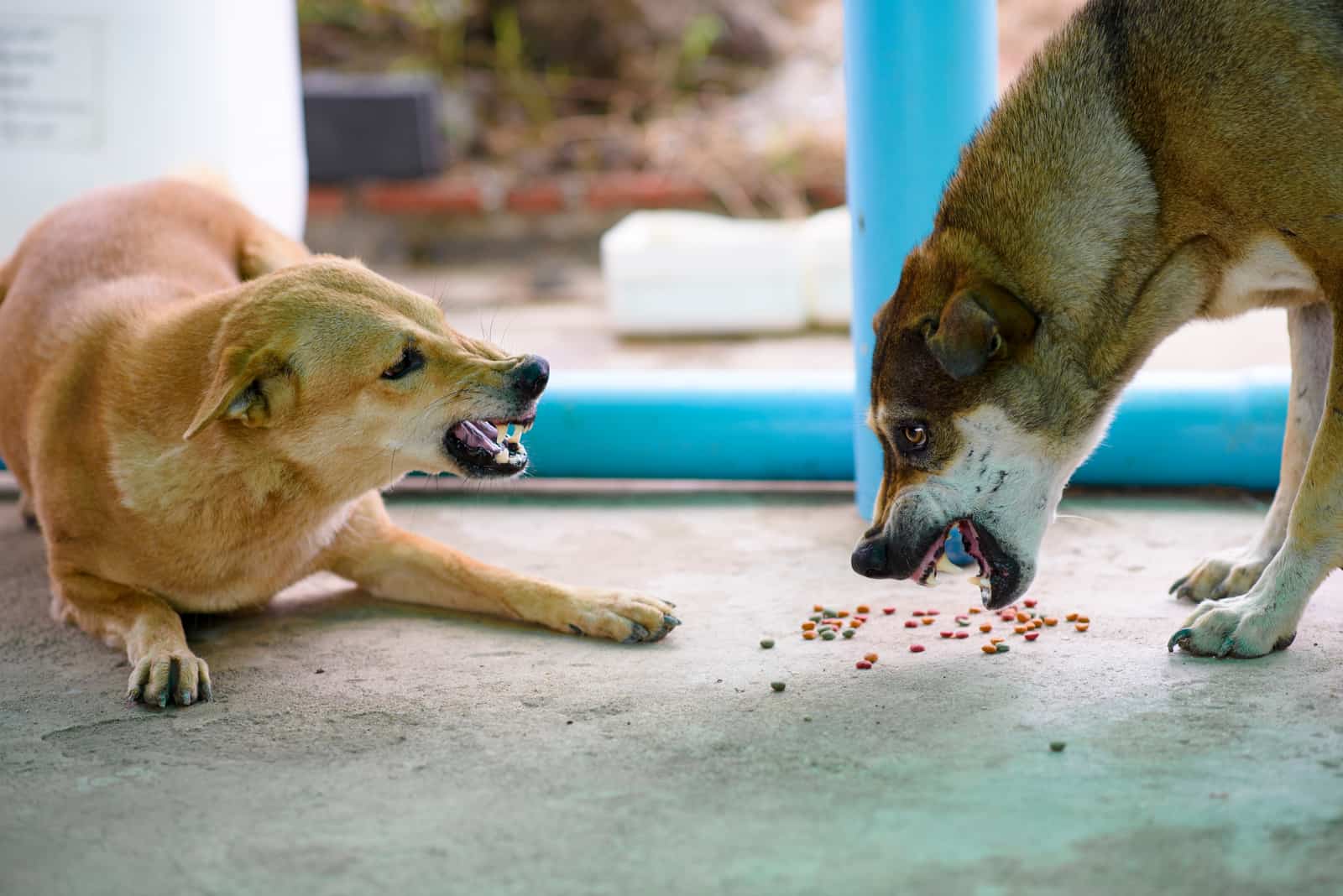
The problem of dogs being aggressive when it comes to their food and eating time, is common and can be managed to some extent.
It’s possible that your younger pup will act violently towards your older canine if they don’t like it when they get in their way during a meal.
Although distancing them appears to be a viable option, it does not actually solve the problem.
One of the potentially dangerous aspects of this type of aggression is the presence of other humans, children, or animals in the same room during the meal.
It’s possible for canines to feel a threat even if there is no pup around. The possibility that one of the people walking by may take their meal can provoke a response from them.
Therefore, the separation of the two canines won’t have any efficient results in the long run, as your younger doggie might display the same type of behavior towards other members of your household.
Even canines that are good with children, such as Shih Tzus, Rottweilers, Corgis, Golden Retrievers, and others, might display the same behavior during a meal and attack anyone who tries to get near their food bowl.
How Can I Prevent This Issue?
There are several ways to prevent such dog behavior, even though it’s more of an instinctive reaction that might be involuntary in certain cases.
First of all, you can try to teach your canines about sharing food by giving a treat to both of them at the same time. If you repeat this practice regularly, both of the pups will eventually learn that they’ll get the food at the same time and that there’s no need to feel endangered by the other one in any way.
Secondly, you might want to try communicating with your pet while they’re eating. However, keep in mind that the reaction might be instinctive, which is why you should test your pup’s boundaries carefully.
Start by talking to them while they’re eating in a calm manner. Once their body language shows that they’re relaxed, you can try petting them (use their favorite spot). With time, your pup might become so calm that you’ll be able to get close to the food bowl without any issues.
Thirdly, once your pups get completely used to you, you can try hand-feeding them. This is a great way to bond with your doggie and solve any behavior issues during mealtimes.
5. Possessive Behavior
It’s possible and completely natural that some pooches don’t like to share their stuff with other pets, especially with other canines.
If the older pup passes by a toy or any kind of object that the new puppy is close to or likes to play with, you might notice resource guarding, which can turn into a serious issue.
What Is Resource Guarding?
Essentially, this type of behavior is the core of a possessive-aggressive attitude that your younger canine might display.
In most cases, it’s prompted by the pup’s need to protect its valuables from other pets and animals.
It may be exhibited as a simple protective response (for instance, fleeing the scene with important objects) or a more hostile reaction, such as biting, barking, or lunging.
Any breed of dog is capable of developing a resource protecting mentality. But, it could be said that French Bulldogs, Labradors, German Shepherds, and Australian Shepherds are amongst the most possessive canines, so they might show signs of overprotective behavior more than others.
How Can I Prevent This Issue?
In this case, it is better to put toys and other objects that your younger canine finds valuable in a separate room, so they can be sure that their possessions are secure at any time.
Basically, prevention is the best answer to possible aggression between pups. If you divide their belongings at the beginning of their relationship, including their beds, toys, collars, etc., both your canines will be at peace.
Training is a crucial step in preventing any issues between the two pups. If you’re not sure whether you’re able to train your canines successfully, you can find a professional trainer that’ll use the proper methods and gain the best results.
If your older canine is already trained, try using commands such as “leave it” or “find your toy”. Distraction might be a good way to solve the issue at the moment, but if you’re looking for a long-term solution, it is better to try one of the suggestions mentioned in the paragraphs above.
6. Canine Epilepsy
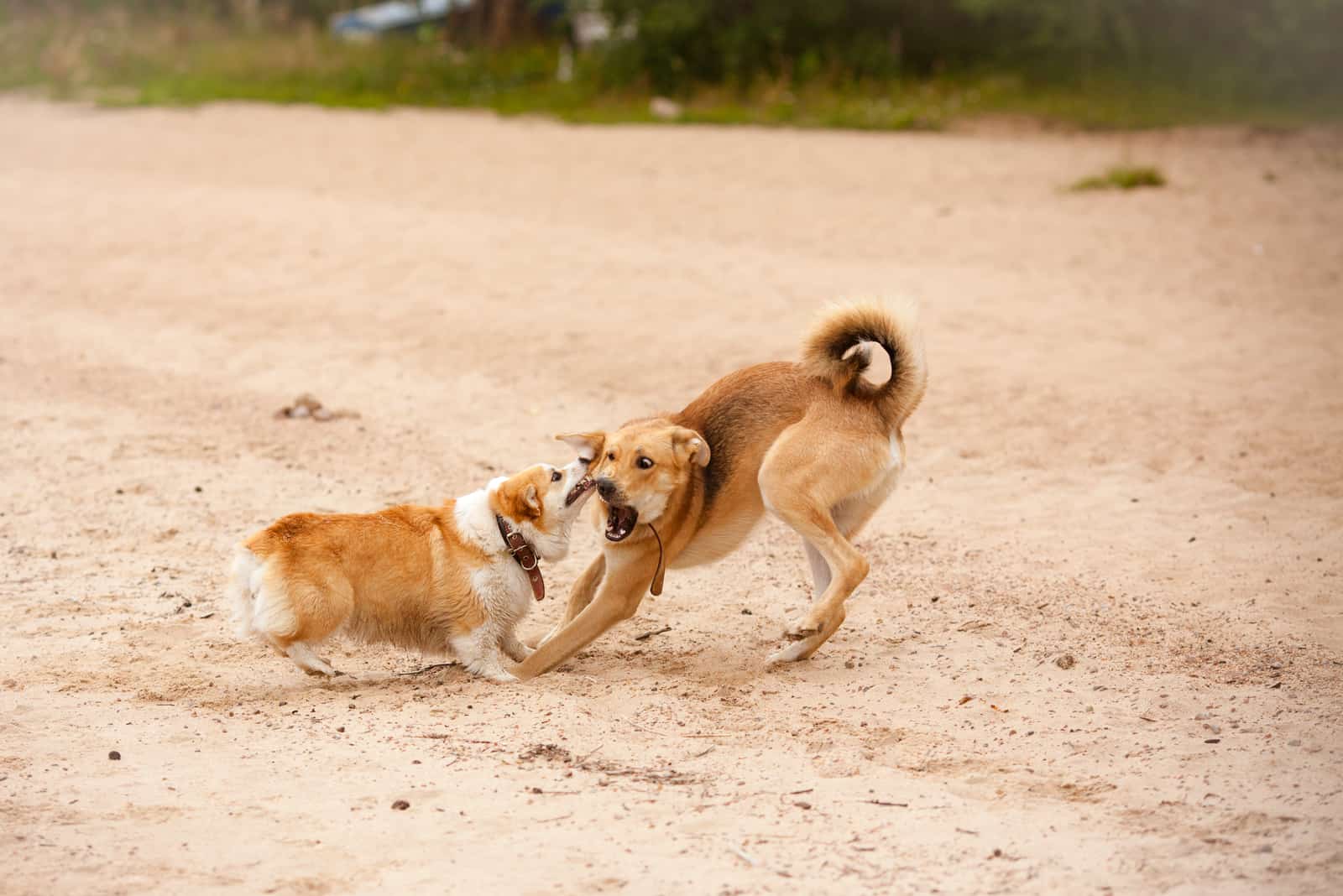
This might come as a surprise for some canine owners, but if your older canine suffers from epilepsy , the younger pooch might have a strong reaction to it.
Seizures that occur during epileptic attacks can cause great fear and trauma in junior pups that witness such occurrences for the first time.
If you notice a younger canine assaulting an older dog during a seizure, it’s a sign of panic and fear of the unknown.
Of course, this is a highly dangerous situation for both canines, especially for the canine that is having a seizure.
How Can I Prevent This Issue?
This is a tricky question because it’s not easy to prepare a human being, let alone a canine for such scenes.
However, there are a few things that you can do. Just like in most cases, prevention is the key to maintaining peace between the two canines.
If you notice that your senior pet is going to have a seizure, take your new puppy to another room or try to have a physical distance between the two by keeping the new canine on a leash.
Also, if you notice that there are certain things or behaviors which might be potential triggers for the seizures, try to remove them or keep the canine away from them.
What Are The Most Common Symptoms Of Canine Epilepsy?
In order to know when to keep your junior pup away from the canine that is about to have an epileptic attack, it’s crucial to know the early symptoms of the condition itself.
The most common signs that your pup is about to have a seizure are:
• Excessive drooling
• Foaming
• Chomping
• Muscle spasms
• Shaking
• Disorientation, etc.
Younger Dog Attacking Older Dog: How Do I Stop My Dog Attacking My Other Dog?
If the older dog growls every time the new canine comes near them or their belongings, it might be a good idea to separate them temporarily.
Baby gates are a great way to keep your pups separated, but still close to one another, so they can sense each other’s presence.
However, if you’re looking for a long-term solution, separation might not be enough, but you can try one of the ways described below.
Let The Junior Have Other Furry Buddies
If your pups aren’t getting along the way you wanted them to, try to find your junior pup some new company outside the house.
Visit dog parks and other places where canines come to play and let them find buddies that are of the same or comparable age.
This way, your pup will learn how to interact with other animals and will spend all their excessive energy, which will prevent rough play with the senior when they return home.
Distraction From The Older Canine
You’ll be able to easily notice when your senior dog isn’t in the mood for play by its body posture.
A one-year old will always be more cheerful and eager to play than a six or seven-year old puppy. Therefore, if you notice that your older pet is trying to avoid rougher play or doesn’t feel comfortable about the junior climbing on top of it, you should react.
The best way to do this is to distract the puppy by playing with it, taking it for a walk, or training it to learn commands that prevent him from getting too close to the older pup.
Keep An Eye On Male And Female Dogs
A lot of experts and experienced pet owners claim that female canines reach social maturity at an earlier age than their male counterparts.
This might be one of the possible reasons why your canines might display aggressive behavior towards each other, especially if the male dog is younger than the female canine.
Female pups rarely display behavior that turns into a physical attack, even if there’s an age gap between them.
On the other hand, male canines can easily attack each other as they generally display violent attitudes more often, especially if one is younger than the other.
Younger Dog Attacking Older Dog: What Are The Most Aggressive Canine Breeds?
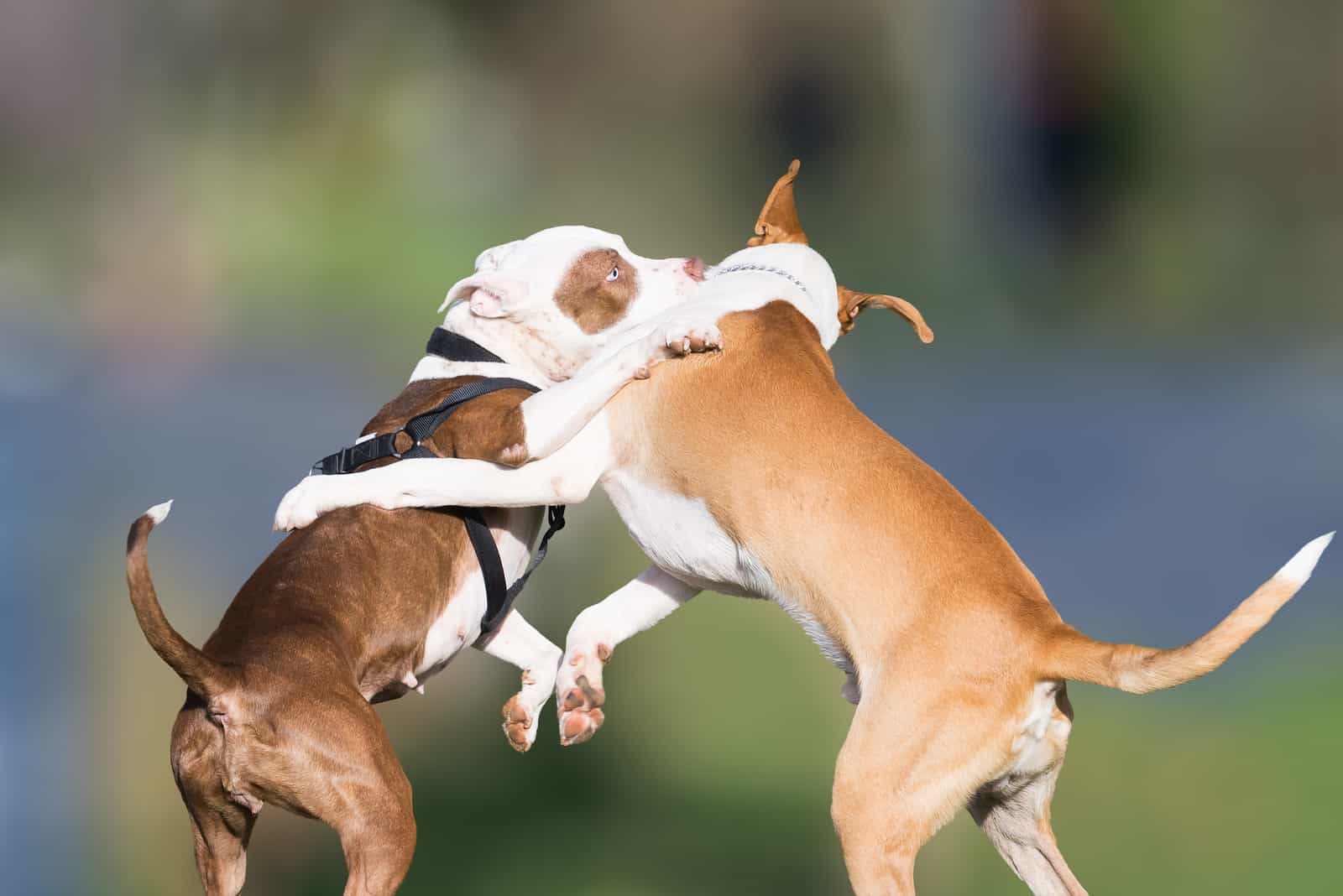
Some people claim that younger canines of certain breeds attack senior pups more often than others. Generally, these types of canine breeds are considered to be quite aggressive with other pets and humans:
• Chihuahuas
• Cane Corsos
• Akitas
RELATED: Male Vs. Female Akita – Differences In Temperament & Health Concerns
• German Shepherds
• Dobermans
• Rottweilers
• Chow Chows, etc.
However, with proper dog training, you’ll be able to socialize even the most aggressive canine breed in the world.
Younger Dog Attacking Older Dog: Final Thoughts
There are plenty of reasons for a younger dog to attack an older dog, and most of them are related to the different levels of energy that those canines have.
However, if you can teach your pets not to pee and poop around the house, you can surely teach them how to live under the same roof harmoniously.
Of course, if your methods don’t work, you can always contact a professional dog trainer or a veterinary behaviorist who’ll try to include training methods with positive reinforcements!
READ NEXT:
Are Golden Retrievers Aggressive? The Truth May Shock You!
Black Pitbull: Aggressive Hounds Or Sweet Angels?
Are Belgian Malinois Aggressive? 11 Temperament Questions Answered















